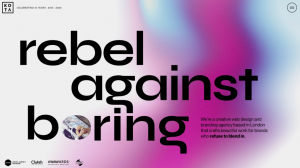IoT specialist Machina Research has teamed up with Philips to produce a white paper entitled ‘The Smart City is Open: the role of open systems as a key enabler of the smart city’.The paper is a timely reminder of the huge challenges the smart city concept presents.
The central observation is that smart cities are unlikely to be concocted behind doors and then sprung fully-formed on their citizens. They are going to have to evolve, proving their worth in specific areas (outdoor lighting, parking applications, municipal WiFi and so on) in small steps with each step demonstrating some return on investment (ROI) or telling social benefit (or at least breaking even) as time goes on.
Piecemeal development? Sort of, but then in this sphere piecemeal might be good. Over-ambitious (and overly-costly) grand schemes will be nonstarters for many cities simply due to lack of funding. After all, cities and municipalities are often nursing underfunded front-line services that must take precedence – to be seen to be fiddling with the outdoor lighting when social care budgets are being squeezed is a political a non-starter.
And cities shouldn’t get too focused on building an all-singing, all dancing, data-exchanging network either.
Machina “argues for an open ecosystem that develops independently but integrates seamlessly at a higher level. This, it is suggested, is key to unlocking increasing value over time from different verticals and applications.”
So down at the technical level Machina argues for a unashamed 21st century approach to smart city development. Open APIs, not nailed-down standards, are required (at least for the medium term). This enables a diverse ‘ecosystem’ – that other great 21st centuryism – to form, feeding in fresh ideas and new (or old) technologies unconstrained by prescriptive architectures and network standards.
Diversity and fragmentation
The diversity of requirements is already driving fragmentation in the IoT access market, not just because the radio vendors can’t agree on a single standard and approach, but because that diversity is driving diverse solutions at different price points: some radio access applications are just one way; some are one way mostly, but every now and then require a gush of data in the downward direction; some need a tiny trickle of data; some need sporadic broadband connections. The list goes on.
The other reason for maintaining a diverse approach is that Smart Cities are just so diverse themselves, their development involving “a very wide variety of players,” says Machina. “National governments; international and regional inter-governmental agencies such as the EU and the UN; international standards bodies; regional and city governments; specialist smart city consultancies and other kinds of consulting organization such as engineering consultants, management consultants, and others; think tanks; ICT companies such as software vendors, systems integrators, start-ups, and telecommunications operators; specialist suppliers of operational systems, including lighting, water management systems, and traffic management systems; transport operators; car manufacturers; architects and planners; and academics and researchers.”
That’s not to say that silos be maintained or allowed to form. The key is ‘open systems’: “To derive the maximum value … the implementation of different applications should not happen in silos and requires a holistic approach.” says Machina. “The new generation of systems needs to be capable of working together, to support some of the ‘smart’ use cases already envisaged, to allow the development of others as yet not conceived, and to enable the use of the new technologies and standards which are still evolving. Flexibility, and open systems, are the key to this.”
There are many reasons to maintain this ‘open’ approach. Machina points out that Cities are not islands and there will always be a need to share data with central government and other agencies and organisations, keeping things open will enable that.
One of the biggest drivers for the entire smart city effort is to tap synergies between different applications through data sharing. Machina cites ‘Bristol is Open’ which “used air pollution measurements as inputs to a dynamic price system for public transport, so that the latter would become more attractive when air quality was low.”
The scope for these really valuable synergies is endless. But trying to look too far ahead to define them in advance, is probably a fool’s game.
So what principles should smart city developments adhere to?
Machina suggests the following.
1. Inter-operability should be a guiding principle in every project and every stage.
2. Forward compatibility with future decisions about interoperability is more important than a once-and-for all platform choice. In the early deployments of smart city applications, as municipalities test the waters, it is best to focus on deploying specific vertical applications, e.g. street lighting, refuse collection or parking, rather than trying to implement overarching city platforms.
3. Cities need to stay flexible and prepare for a future based on open standards and APIs. During the current stage of smart city development, the key to remaining flexible is implementing open systems that enable interoperability via interfaces.
4. Choosing open and recognized standards is a crucial element that is required to ensure open and durable systems and infrastructure. Where no recognized standard exists yet, the ability to work via APIs is key to guaranteeing openness.
This article originally appeared in Telecom TV.
Telecom TV delivers daily insight on the converging worlds of telecoms, media and entertainment. Views expressed in this article from Telecom TV do not necessarily reflect those of ITU.
Source of Article



